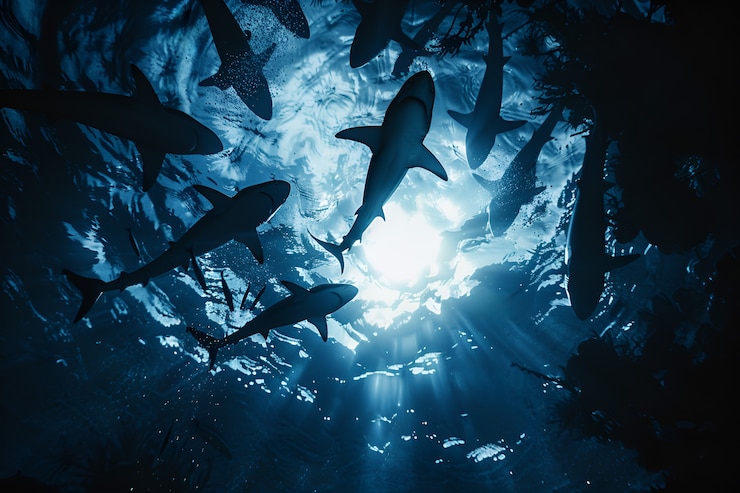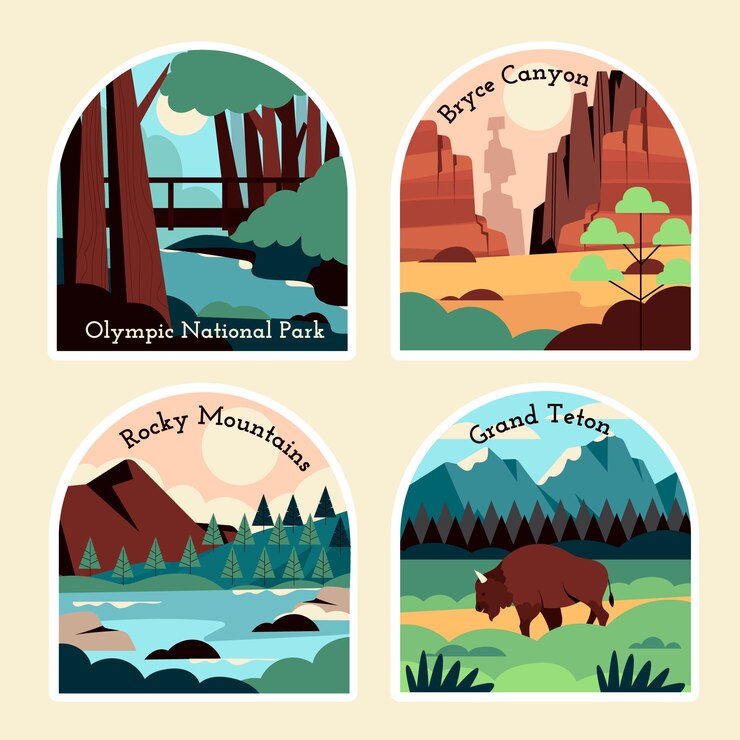
From the tiny dwarf lantern shark that fits in your hand to the enormous whale shark that spends nearly eight hours a day eating, over 1,000 species of sharks and rays inhabit the world’s five oceans. If you’ve always wanted to encounter a great white shark or any of its relatives in their natural habitat, this guide will introduce you to 15 of the best places on Earth to swim, snorkel, or dive with these often misunderstood creatures. Destinations range from South Africa, Australia, French Polynesia, Colombia, and Micronesia, to some prime locations within the United States.
Though these apex predators have been around for 400 million years, survived the dinosaurs, and starred as villains in Hollywood films, many species are endangered due to climate change, habitat destruction, overfishing, and hunting. Sharks play a crucial role in maintaining the ocean’s ecosystem balance, so it’s essential to choose reputable tour companies that take steps to reduce their environmental impact and contribute to shark research and conservation. Remember, wild animals can be unpredictable, so always opt for companies with solid safety records.
South Africa’s coastal waters, bordered by both the Atlantic and Indian Oceans, host a wide variety of sharks and other marine life, making it a hotspot for recreational shark diving. The country was the first to protect great whites and offers unforgettable cage diving experiences in Gansbaai and Shark Alley. Choose an eco-conscious company like Marine Dynamics for a safe and educational adventure. Sharks are most active from April to September, and don’t miss the annual sardine run along the Wild Coast, which attracts predators like copper sharks, whales, and dolphins.
Off the Baja California coast, a remote volcanic island known for its excellent visibility and calm waters is one of the premier locations for cage diving with great white sharks. Only accessible by liveaboard trips from Ensenada, companies like Incredible Adventures and Nautilus offer multi-day excursions. Peak seasons vary, with males arriving in July and larger females, known as the ‘titans,’ from October to November.
Australia, surrounded by ocean teeming with life, presents ample opportunities for shark encounters. Between March and July, Ningaloo Reef in Western Australia hosts migrating whale sharks. The Great Barrier Reef is perfect for spotting blacktips and whitetips, while Byron Bay offers dives with grey nurse sharks year-round. For a more thrilling experience, cage diving with great whites is available in Port Lincoln through companies like Adventure Bay Charters.
Colombia’s Malpelo Island, 310 miles off the coast, is a UNESCO World Heritage site and a sanctuary for over 200 hammerhead sharks and 1,000 silky sharks. Accessible only by liveaboard trips, the island offers sightings of additional marine life, including whale sharks and giant groupers. While sharks are present year-round, the best conditions occur during the wet season (June-December).
In Fiji, the Namena Marine Reserve and Beqa Lagoon offer excellent opportunities to snorkel and dive with various shark species, including grey reef, whitetip, and tiger sharks. Shark numbers and visibility are best from May to October.
Hawaii is home to around 40 shark species, with reef, Galapagos, and tiger sharks frequently seen near popular diving spots. On Oahu’s North Shore, companies like One Ocean Diving provide cage-free encounters that emphasize education and conservation.
Whale sharks gather off Mexico’s Riviera Maya from May to mid-September, offering a unique chance to swim alongside these gentle giants as they feed on plankton. Choose eco-friendly tour operators like V.I.P. Holbox Experience for a responsible encounter.
The Galapagos Islands offer unparalleled underwater adventures, where you can see seals, marine iguanas, and several shark species. Liveaboard tours to Wolf and Darwin Islands provide encounters with whale sharks and hammerheads.
California’s La Jolla attracts leopard sharks during breeding season (March-October), creating opportunities for beginners and non-divers to observe these harmless creatures through guided snorkel tours.
French Polynesia is a shark haven year-round. Fakarava, a UNESCO biosphere reserve, hosts the annual “wall of sharks” event during July’s full moon, while Tikehau and Tara offer encounters with tiger and hammerhead sharks, respectively.
The Bahamas Shark Sanctuary, established in 2011, is home to numerous species, with frequent sightings on dive trips. Be mindful of tour operators that chum the water and choose accordingly based on your preferences.
Palau’s waters, protected by fringe reefs, are rich in shark diversity, including gray reef sharks and blacktips. Sam’s Tours provides access to famous sites like the Blue Corner and Ulong Channel for thrilling dives.
Costa Rica’s Cocos Island is part of the hammerhead triangle and offers encounters with various shark species. Conditions are best for diving around the Bat Islands between May and November.
Florida’s coastal waters host an array of shark species year-round. The Keys are popular for family-friendly surface viewing trips, while Palm Beach and Jupiter offer chances to see larger sharks like lemon and hammerheads.
Curaçao boasts over 60 dive sites, including Klein Curaçao, known for its caves favored by sharks. Dive sites like The Blue Room and Mushroom Forest offer more sightings, with the island’s aquarium providing a meet-and-feed program for a secure experience.


